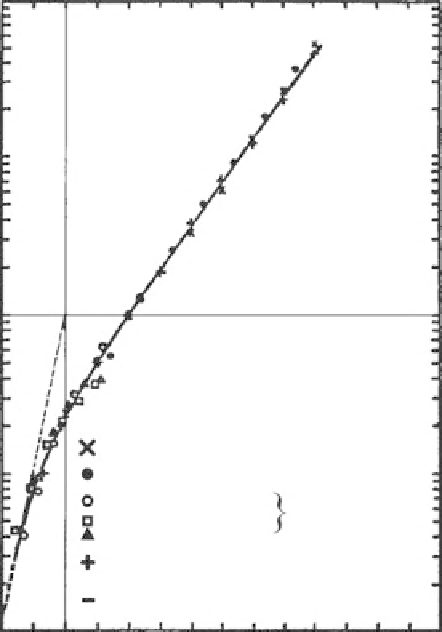Biomedical Engineering Reference
In-Depth Information
100
EXPONENT = 0.54
10
1
AVERAGE OF 12 STUDIES, ROBINSON
0.1
MAGNITUDE ESTIMATION, S.S. STEVENS
HALVING + DOUBLING
SCHARF +
J.C. STEVENS
MAGNITUDE ESTIMATION
HALVING + DOUBLING
FELDTKELLER, ZWICKER, + PORT
HELLMAN + ZWISLOCKI
0.01
0
20
40
60
80
100
120
SENSATION LEVEL IN DECIBELS
Figure 10.6
A typical binaural loudness function (solid line) determined with two reference
standards and compared to the results of five other studies performed with different methods. The
intermittent straight line shows a linear relationship between loudness and sound intensity (Modified
from Hellman and Zwislocki (1963),
©
American Institute of Physics [32])
10.4.4 General Law of Differential Sensitivity
This fourth and last law concerns the extent to which increments in audible intensity can
be detected. One of the oldest laws in psychophysics is Weber's law, which states that
intensity increments that are barely detectable are, in magnitude, directly proportional to
the base intensity. This law is often expressed as the Weber fraction consisting of the
ratio between the just-noticeable increment and the base magnitude which tends to have a
constant value, except at very low stimulus values, where it rapidly increases. In hearing,
for pure tones, and in vibrotaction (the response of tactile nerve endings to varying forces
on the skin and to oscillatory motion of the skin), for any stimuli, the value tends to
decrease slowly as the base intensity increases and approximates to Weber's law.
In more recent times, paradoxical properties of Weber's law have been discovered
within the auditory fraternity. When measured by means of just detectable intensity incre-
ments or the difference between two intensity increments, Weber's fraction has been

